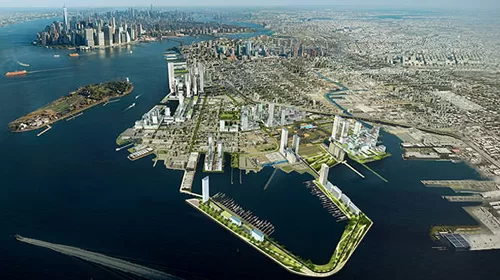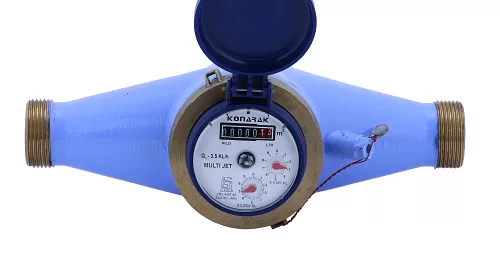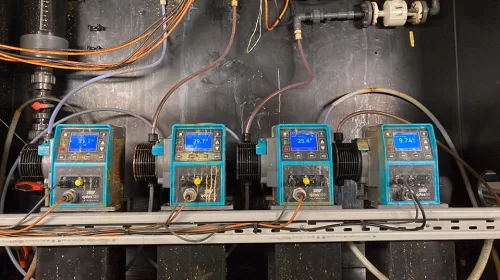By Hemalatha A G, Water Management SME, Embassy Services
Executive summary
Water is one of the basic essential elements to all living creatures in the world.We are experiencing water scarcity because of exponential increase in population and unethical sewage/waste disposal to the water source. Providing good quality water in sufficient quantities to end users is a big challenge for the facility management teams. Small modifications in treatment processes can help the maintenance team to perform better. UsingDisc filters& Screen filters in place of pressure sand filter is just one of the few ideas that can better the efficiency. The disc & screen filter require less space, are more efficient, provide uniform output & more water saving in terms of backwash water.
Treatment units Whether it may be water or wastewater, proper treatment systemsneed to be adopted in the property to achieve a good, treated water quality for primary/secondary use and to fulfil statutory compliance. The treatment of water & wastewater has been divided into 3 stages: 8 Physical treatment: involves removal of floating and suspended solids. Terms belonging to this category are screens, sedimentation, sand filters, carbon filters, etc. 8 Chemical treatment: involves removal of pollutants. Terms belonging to this category are coagulation & clari-flocculation, disinfection using chlorine, etc. 8 Biological treatment: heart & art of sewage treatment through aerobic treatment & anaerobic treatment; Where microbial growth happens in controlled environment to reduce the organic pollution load from sewage.
Present Challenges: Above treatment sequences are typical conventional treatment methods in general. In the present condition, the chances of modifying the existing system into new technology requires high Capex and Opex costs, larger space availability, and good expertise on treatment processes. Due to the above concerns,organizations are hesitant to take up modifications with the treatment process.Though old conventional methods perform moderately well, to achieve best quality output and meet standard requirement for high customer satisfaction, new and improved technology adoption is a must.
Suggestions:
8 adoption of conventional ASP to SBR/MBBR/ MBR technology
8 Adopt UV disinfection instead of Chlorine disinfection These are some of the approved technologies by Pollution Control Boards:
Disc Filters and Screen Filters (Replacing Pressure sand filters with Disc filters at STP &Screen filters at WTP): Pressure sand filters are used to remove suspended solids present after Secondary treatment of sewage. Recently, the technology of disc filter has been improvised which can be used in lieu of pressure sand filter. This can save significant water used for backwash and reduce maintenance costs.These Screen & Disc filters are proven technologies used in Israel.
Current challenges:
8 For WTP, even though the quality of potable water is good, sand filters are used, and backwash is done manually. There is no mechanism to prevent unnecessary backwashes and the pressure gauge‘delta p’ method is not always accurate 8 If the backwashing schedule is missed, there are chances of sand carrying over due to channeling 8 Requires yearly media replacement which involves cost and shut down time
8 Most of the filters are kept at basement level with which makes movement of media difficult 8 The old media needs to be disposed off
8 Internal painting is needed every year to prevent corrosion. A workman entering inside the small vessel and painting it involves safety risk due to low oxygen concentration and toxic paint VOC
8 Bacterial growth in the sand media which increases chlorination requirement
8 Sand filters cannot be adjusted to varying TSS loads
The Solution:
SCREEN FILTER FOR WTP THE FILTRATION PROCESS:
Raw water enters through the filter inlet and passes through the screen. Clean water flows through the filter outlet. The gradual dirt buildup on the screen’s inner surface causes a filter cake to develop, creating an increase in the pressure differential across the filter system. A differential pressure (DP) switch senses the pressure differential and when it reaches a pre-set level, the self-cleaning process begins.
THE SELF-CLEANING PROCESS: The self-cleaning cycle is initiated by any one of the following conditions: 8 Signal from the DP switch, pre-set at 7 psi (0.5 bar) 8 Time interval parameter set at the controller 8 Manual start triggered by the electronic controller keypad 8 The flush valve opens to atmosphere creating a strong suction force at the scanner nozzles, effectively removing dirt particles from the screen and discharging them from the filter.
DISC FILTER FOR STP
THE FILTRATION PROCESS: The discs are stacked on the spine and assembled according to pre-determined water filtration requirements. During filtration, the discs are compressed by means of a pre-loaded spring and differential pressure, forcing the water to pass through the grooved disc surface, thus trapping the solids.
THE BACKWASH PROCESS: Activated by a pre-determined time trigger or differential pressure, the filter enters backwash mode. The inlet valve port shuts while the drain valve port opens. Water flows through a bypass filter screen into the outlet valve and into the filter. During the backwash process, pressure is released, and the spine’s piston elevates, releasing the compression on the discs. Tangential jets of filtered water are then forced through the nozzles positioned along the spine. At this stage the discs spin freely, loosening the trapped solids which are then flushed out.
ADVANTAGES & FEATURES: 8 Micron-precise depth filtration of solids 8 Innovative disc technology captures and retains large amounts of solids 8 Long-term operation with minimum maintenance -less need for media replacement since the Disc/Screen lasts for over 5 years 8 Fully automated, simple to operate 8 Short automatic backwash with regulated water volume for a small water footprint 8 Backwash time as low as 15-20 seconds per cycle 8 Zero biological growth in the disc/screen due to innovative MOC used.
Case study on savings through water efficiency generated byusing Screen Filter: 8 Quantity of water treated : 304 KL 8 Quantity of water consumed for back wash : 105 Lts against 35 KL thru PSF 8 Percentage of water saving by using screen Filter in place of PSF: 11% of total flow
NON-QUANTITATIVE SAVINGS: Reduction in environmental impact by eliminating the use of sand in the filters and reduced humanhours for activities like cleaning, painting, etc





